|

1. Body colour predominantly blue-green metallic (a); abdomen
usually entirely blue-green metallic, rarely reddish-brown from
segment 3. Maxillary palps very short, usually not visible. Fore
wing discal cell anteriorly touching vein R (b) ...Chalinus

- Body colour predominantly black or brown, never blue-green
metallic; abdomen from segment 3 rarely reddish-brown (A). Maxillary palps elongate, often visible
(A). Fore wing discal cell not touching
vein R (B), sometimes with distinct vein 1r-Rs between discal cell and
vein R ...2
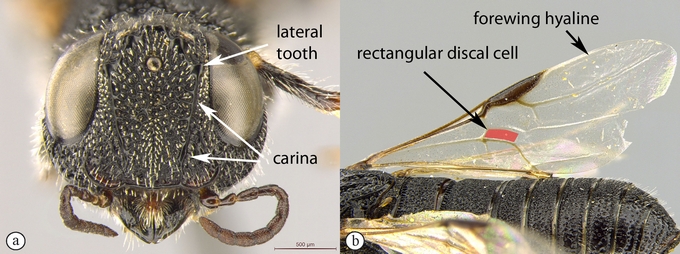
2. Frons with converging longitudinal carinae extending from lateral
coronal teeth at level with median ocellus to just above antennal
bases; ventral coronal teeth absent (a); area between carinae
concave. Head and thorax with elongate setae. Fore wing in both
sexes hyaline, discal cell rectangular (b) ...Pedicrista
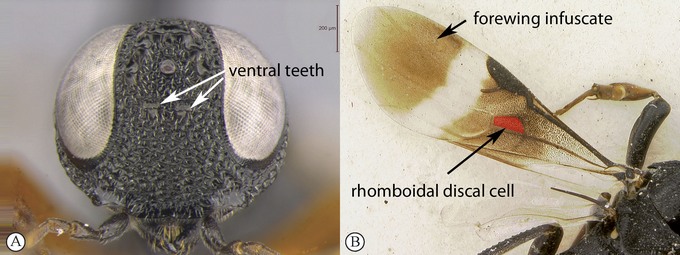
- Frons without longitudinal carinae or concavity; ventral coronal
teeth present (A). Head and thorax usually with inconspicuous, short
pilosity, rarely with elongate setae (Pseudoryssus niehuisorum).
Fore wing with infuscate areas of various extent, most prominently
in the females (fore wing entirely hyaline in male Leptorussus
spp.), discal cell rectangular or rhomboidal (B) ...3
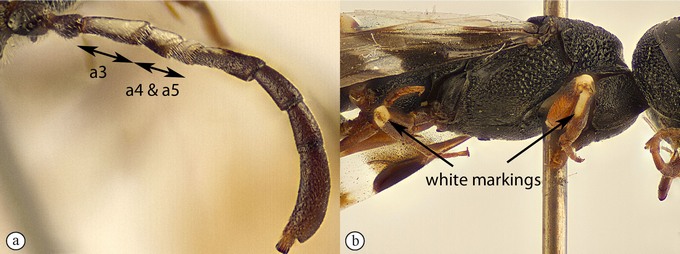
3. Female with combined length of antennomeres 4+5 at most equal to
antennomere 3
(a).
At least some legs with white markings of various extent (b) ...Orussus
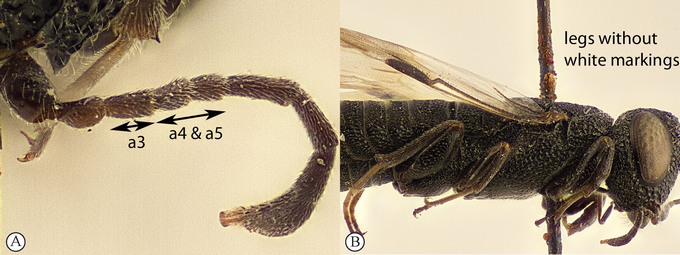
- Female with combined length of antennomeres 4+5 longer than
antennomere 3
(A).
Legs without white markings (B) ...4
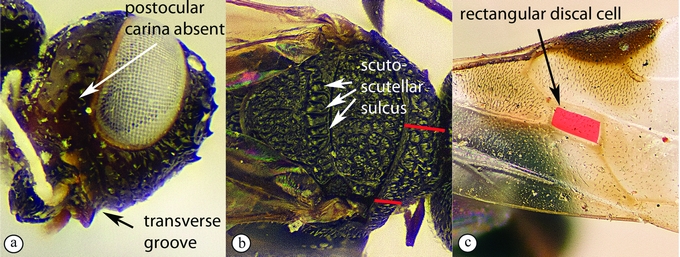
4. Postocular carina absent (a). Frons with ventral
transverse groove just above antennal bases (a). Pronotum in dorsal view
longest medially, or of approximately equal length throughout (b)
(red bars).
Scutoscutellar sulcus deep, with coarse sculpture (b). Forewing discal
cell rectangular (c) ...Leptorussus
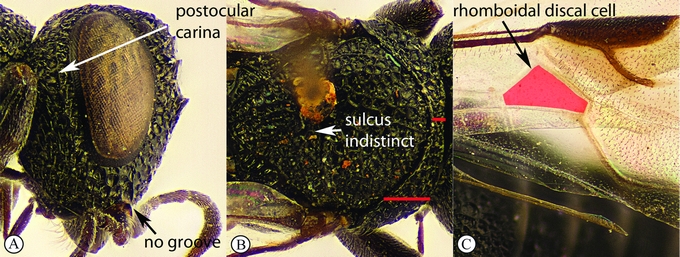
- Postocular carina at least weakly developed (A). Frons without ventral transverse groove (A). Pronotum in
dorsal view longest sublaterally (B)
(red bars).
Scutoscutellar sulcus indistinct (B). Forewing discal cell rhomboidal (C) ...Pseudoryssus |